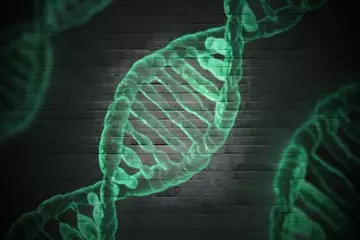Each part of our body has been given a specific task. For instance, the lungs are for breathing, the heart is for pumping blood and the brain is for managing all the systems of the body.
Similarly, the arteries take oxygen-rich blood from the heart to the rest of the body’s tissues and cells, while the veins return oxygen-depleted blood to the lungs and heart. These arteries and veins are connected to each other with the help of tiny blood vessels called capillaries.
In the absence of adequate capillaries, the arteries and veins can get entangled and form an arteriovenous malformation (AVM). Essentially, in the absence of capillaries, multiple arteries get jumbled up. The blood from these arteries flows directly into a vein, causing its enlargement in some places. This can weaken the blood vessels in the brain.
AVMs are more common in males than in females. A person suffering from an AVM may present with symptoms such as headaches, dizziness, slurred speech, blurred vision, loss of balance and coordination, seizures and stroke.
Doctors do not know the exact cause of AVMs but they are assumed to be a result of genetic mutation. They can be present in a newborn, but they can also develop later in life.
AVMs can be diagnosed with the help of a CT scan, MRI scan, MRA or CT angiogram.
The treatment of AVM includes embolization which helps in reducing the size of the AVM. Followed by a surgery, craniotomy, which is done to remove the AVM from the brain. After the surgery, radiation therapy is given to make sure that the AVM has cleared completely from the brain.
AVMs can be managed easily if diagnosed in the early stages. Here in this article, we will tell you about the symptoms, complications and treatment of arteriovenous malformations or AVMs.
Surgical treatment of arteriovenous malformation
The surgical treatment of arteriovenous malformation (AVM) involves the complete resection (removal by cutting out) of the tangled blood vessels from the brain. The surgical procedure used for AVM removal is called a craniotomy and it is done under general anaesthesia.
During a craniotomy, the surgeon creates a small opening in the skull. There are various kinds of craniotomies, but in this case, the type of craniotomy depends on the size and location of the AVM in the brain.
Once the surgeon gets access to the AVM, the abnormally tangled arteries and veins are removed. The surgeon may use a variety of equipment, such as laser and electrocautery, to shrink and dissect the AVM from the normal brain tissue. This prevents the AVM from leaking or bursting during the surgery and also ensures that the blood flow is redirected to the normal vessels.
The patient may have to be hospitalized for five to seven days followed by a few days for rehabilitation.
Advantage of the procedure: The advantage of the surgery is that there is a complete removal of the AVM.
Disadvantages of the procedure: There is a high risk of developing a bleed, having a stroke or damage to the surrounding brain tissue during and after the AVM is removed.
Embolization of arteriovenous malformation
Embolization is a procedure which involves inserting a certain type of glue into the AVM with the help of a very thin tube called a catheter. This blocks blood flow into the AVM, which may help limit blood loss during surgery. This could also slow down the blood flow, which may reduce the chance of bleeding if open surgery is not performed immediately afterwards.
This procedure is performed using the angiography machines in the radiology department. For the procedure, a small incision is made in the groin area of the patient and a catheter is inserted into the femoral artery. The catheter is then passed through the tangled blood vessels to the feeding arteries of the AVM. Then the occluding material, either coil or acrylic glue, is passed into the AVM from the catheter.
The patient may have to stay in the hospital for a week or more for observation after the procedure.
Advantages of the procedure: Embolization is less invasive than surgery. It is also useful in treating deeply embedded or inoperable AVMs.
Disadvantages of the procedure: There is a risk of embolic stroke from the catheter during the procedure. There is also a chance of rebleeding because the AVM is not completely destroyed. Another disadvantage would be the multiple sittings required for complete treatment.
Radiosurgery for arteriovenous malformation
Radiosurgery is a procedure in which beams of highly energized photons (light particles) are aimed precisely at the abnormal vessels of the AVM using a Gamma Knife.
With time, this radiation causes the AVM to shrink and scar, thus blocking the abnormal blood vessels. This restricts the blood flow of the AVM, thus reducing the risk of bleeding. Therefore radiosurgery can also be used before surgery to minimize the risk of bleeding.
The patient can go home the same day but has to come for regular follow-up visits. In most of the cases, after six months to two years, the affected vessels of the brain gradually close off and get replaced by the scar tissue.
Advantage of the procedure: The advantage of radiosurgery is that it is painless and requires no incision.
Disadvantages of the procedure: Radiosurgery is best for smaller AVMs. Since radiosurgery takes a long time to take effect, the risk of haemorrhage still exists. A long-term study with patients who got radiosurgery done found that 90% of them showed complete obliteration of their AVM after five years. However, 4% of these patients encountered brain haemorrhage during the waiting period.













































